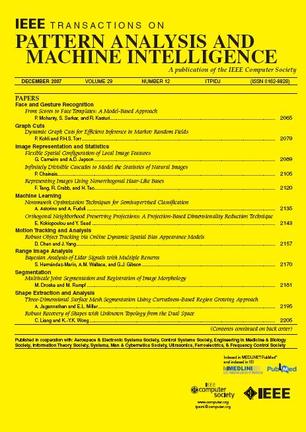Unsupervised Deraining: Where Asymmetric Contrastive Learning Meets Self-similarity
IF 20.8
1区 计算机科学
Q1 COMPUTER SCIENCE, ARTIFICIAL INTELLIGENCE
IEEE Transactions on Pattern Analysis and Machine Intelligence
Pub Date : 2022-11-02
DOI:10.48550/arXiv.2211.00837
引用次数: 0
Abstract
Most existing learning-based deraining methods are supervisedly trained on synthetic rainy-clean pairs. The domain gap between the synthetic and real rain makes them less generalized to complex real rainy scenes. Moreover, the existing methods mainly utilize the property of the image or rain layers independently, while few of them have considered their mutually exclusive relationship. To solve above dilemma, we explore the intrinsic intra-similarity within each layer and inter-exclusiveness between two layers and propose an unsupervised non-local contrastive learning (NLCL) deraining method. The non-local self-similarity image patches as the positives are tightly pulled together and rain patches as the negatives are remarkably pushed away, and vice versa. On one hand, the intrinsic self-similarity knowledge within positive/negative samples of each layer benefits us to discover more compact representation; on the other hand, the mutually exclusive property between the two layers enriches the discriminative decomposition. Thus, the internal self-similarity within each layer (similarity) and the external exclusive relationship of the two layers (dissimilarity) serving as a generic image prior jointly facilitate us to unsupervisedly differentiate the rain from clean image. We further discover that the intrinsic dimension of the non-local image patches is generally higher than that of the rain patches. This insight motivates us to design an asymmetric contrastive loss that precisely models the compactness discrepancy of the two layers, thereby improving the discriminative decomposition. In addition, recognizing the limited quality of existing real rain datasets, which are often small-scale or obtained from the internet, we collect a large-scale real dataset under various rainy weathers that contains high-resolution rainy images. Extensive experiments conducted on different real rainy datasets demonstrate that the proposed method obtains state-of-the-art performance in real deraining. Both the code and the newly collected datasets will be available at https://owuchangyuo.github.io.无监督脱轨:非对称对比学习与自相似
大多数现有的基于学习的脱轨方法都是在合成的rain -clean对上进行监督训练的。合成雨与真实雨之间的领域差距使得它们难以推广到复杂的真实雨场景。此外,现有的方法主要是独立利用图像或雨层的属性,很少考虑到它们之间的互斥关系。为了解决上述困境,我们探索了每层内部的内在相似性和两层之间的相互排他性,并提出了一种无监督非局部对比学习(NLCL)脱训练方法。非局部自相似图像斑块作为正极被紧紧地拉在一起,而雨斑块作为负极被明显地推开,反之亦然。一方面,每层正/负样本内的固有自相似知识有利于我们发现更紧凑的表示;另一方面,两层之间的互斥性质丰富了判别分解。因此,每层内部的自相似性(相似性)和两层外部的排他性关系(不相似性)共同作为通用图像先验,有助于我们无监督地区分雨和干净图像。我们进一步发现,非局部图像斑块的固有维数普遍高于雨斑块。这种见解促使我们设计一个不对称的对比损失,精确地模拟两层的紧致度差异,从而改进判别分解。此外,认识到现有真实降雨数据集的质量有限,这些数据集通常是小规模的或从互联网上获得的,我们收集了各种降雨天气下的大规模真实数据集,其中包含高分辨率降雨图像。在不同的真实降雨数据集上进行的大量实验表明,该方法在真实训练中获得了最先进的性能。代码和新收集的数据集都可以在https://owuchangyuo.github.io上获得。
本文章由计算机程序翻译,如有差异,请以英文原文为准。
求助全文
约1分钟内获得全文
求助全文
来源期刊
CiteScore
28.40
自引率
3.00%
发文量
885
审稿时长
8.5 months
期刊介绍:
The IEEE Transactions on Pattern Analysis and Machine Intelligence publishes articles on all traditional areas of computer vision and image understanding, all traditional areas of pattern analysis and recognition, and selected areas of machine intelligence, with a particular emphasis on machine learning for pattern analysis. Areas such as techniques for visual search, document and handwriting analysis, medical image analysis, video and image sequence analysis, content-based retrieval of image and video, face and gesture recognition and relevant specialized hardware and/or software architectures are also covered.

 求助内容:
求助内容: 应助结果提醒方式:
应助结果提醒方式:


